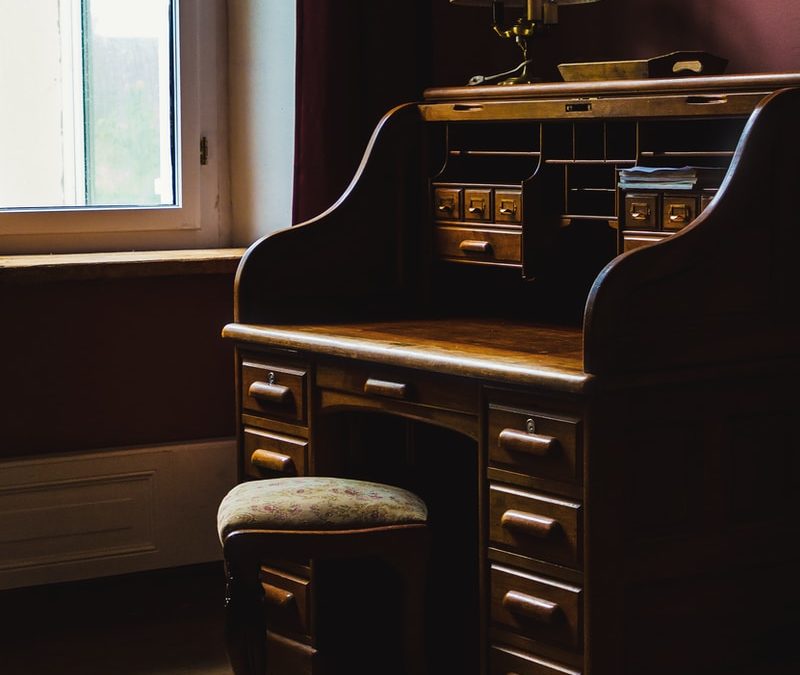
by admin | Nov 18, 2021 | Declutter
The things that find their way into you home from a previous generation are not valuable because of their age, but more so because of the emotional connection you had to the person it once belonged to. This could be something that belonged to one of your parents, or perhaps your grandparents. The personal stories you have had told to you about this person or the documents you have seen which show you something of their life and circumstances, these are just as much pieces of your family history as the physical items that survive in your home.
Let Heirlooms move within Your Family - just because you don't want to hang on to your Uncle Bob's massively heavy two volume collection of The 1938 World Encyclopaedia doesn't mean that you have to throw this away or wait for a few months for it to be listed and sold via an online auction platform. Put the word around that you have this to go to a good home and you might discover a cousin who would love it, with or without any pre-existing good memories of Uncle Bob.
Create a Scrapbook - Gather together some family pictures, from your childhood, or the life of your parents and grandparents. This way you don't have to hang onto hundreds of images, but can find a few dozen pictures, along with marriage certificates, holiday postcards, travel tickets and school reports, to create something which can be cherished and which will trigger plenty of good thoughts on its own.
Let the Item have a New Life - If you decide that the piece is good enough for someone other than yourself to cherish, give thought to where it might be better placed. This could be with a family member, friend or someone whom you know would appreciate it and give it a good home. The item could help them set up home, downsize when they are starting over or simply be a gift they would appreciate to cheer up an aspect of their dwelling.
Mortality and More - When my Grandpa on my Mum's side bought himself a writing desk, a bureau to be more accurate, it was 1927 and he was not yet married. So much of his life was ahead of him. He had not met my grandmother. Fast forward ninety plus years and I have that bureau as my own writing desk now. I never met John Harris. But his widow was my Grandma Alice and I loved visiting her. When she passed away the desk came to my Mum, and as a preschooler I was fascinated by the closing front cover and it's hinges, by the spiral turned legs. I loved the little felt lined drawers and the leather cover of the desk. The smell of the bottles of ink and the balance of the pens inside it all drew my attention. During my senior school years I did my homework on the leather top surface of the opened bureau. This piece of furniture has lived in four houses and served several generations of our family. Previous owners are long since dead and buried and I think sometimes about what will happen to this piece of furniture going forward with my own demise. Will one of my sons want it for their own place? He doesn't need it while he is at university. He may not have space for it in his first home. He might just not want it.
You see the problem here in this simple example of a piece of wooden furniture that has so much more history now than when a young bachelor called John Harris bought it simply because he liked it. We complicate an inanimate object by giving it meaning, by wrapping it with the history we know and the memories we imagine and part recall.
We imbue these possessions with those same magical qualities which I have written of elsewhere and which we gather about us. We do this because we are human and to make sense of the world around us we have to give meaning or significance to everything we see or do. Every small ornament, trinket, or medallion. Each item of clothing or piece of furniture. To everything we add a story. It is how we cope with so much in our lives, to differentiate one thing or experience from another potentially similar item or event. It is precisely because of this attaching of meaning, memory and significance that we find such struggle in letting go of many of the items we have in our homes.
Find ways to identify the stories and the emotions that form some part of your nostalgic connection to your belongings. If you can encapsulate these into your journal and into the photos you take and share, you will find it so much easier to let go of what no longer needs you to hold on to it. By letting something go you allow it a new life and a fresh purpose elsewhere.
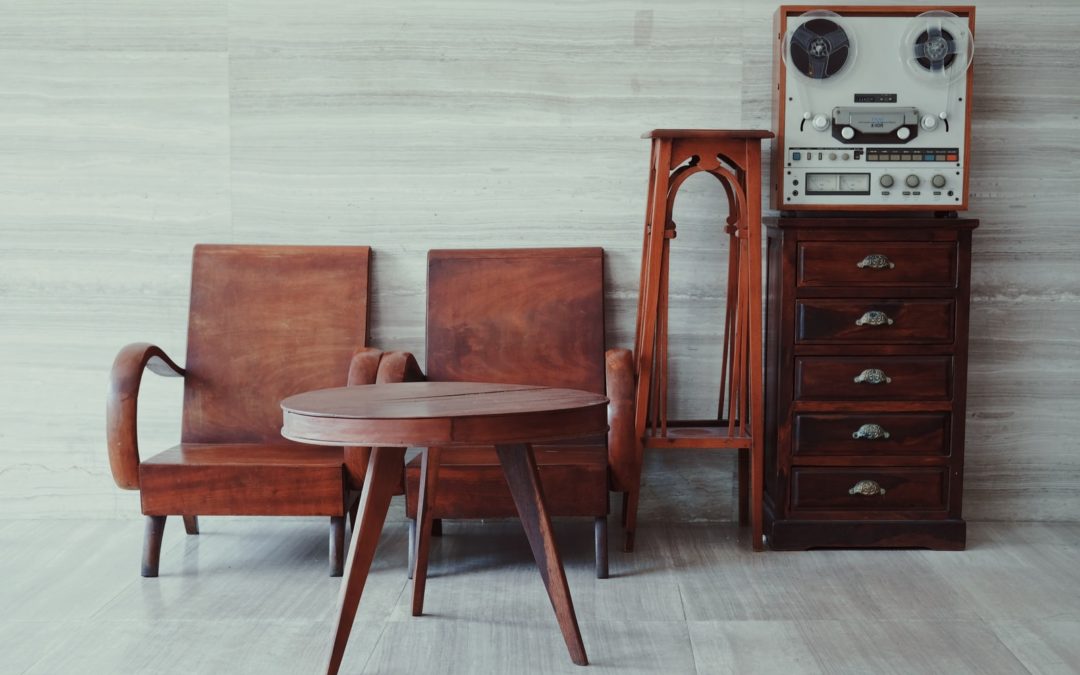
by admin | Nov 4, 2021 | Declutter
We all love to attach significance to each thing we bring into our home. The most ordinary things can seem difficult to get rid of because we attach such meaning to them. It could be a pencil, a shirt, a saucepan, a pair of shoes or a box of toys. These should be easy to pick up, consider and then decide on whether to Sell, Donate, Gift or Bin each thing.
This is all very well with things we have bought because of their function or utility, but what do we do with things that belonged to a previous generation of our family. The single biggest obstacle to us making a good job of dealing with the stuff we have accumulated is the sentimental one, and this is always exaggerated by family connection.
When you want to move closer to the significance of some of the objects in your home and discover the real emotional connection you have to each piece, here are some simple techniques that may be useful.
Let Heirlooms move within Your Family - just because you don't want to hang on to your Uncle Bob's massively heavy two volume collection of The 1938 World Encyclopaedia doesn't mean that you have to throw this away or wait for a few months for it to be listed and sold via an online auction platform. Put the word around that you have this to go to a good home and you might discover a cousin who would love it, with or without any pre-existing good memories of Uncle Bob.
Let Go of Gifts that Get You Down - A gift is given freely or shouldn't be given at all. Where it feels like a weight around your shoulders, let it go as soon as you can, without reservation or doubt over letting it go. Have your house be a place of peace and joy by ensuring that the things you didn't choose are still in line with your values and visions about your world. If you feel awkward about it, let it go.
Choose what is a 'Keeper' - Hang on to the crazy, the cool, the beautiful and the items that are evocative of good times and which give you that same sense or feeling when you look at them or hold them in your hands and visualise the good times they represent.
Create a Scrapbook - Take family pictures, from your childhood, or the life of your parents and grandparents. This way you don't have to hang onto hundreds of images, but can find a few dozen pictures, along with marriage certificates, holiday postcards, travel tickets and school reports, to create something which can be cherished and which will trigger plenty of good thoughts on its own.
Recycle, Reuse, Remodel - Some things you love are gorgeous, but bulky. A jacket, an heirloom blanket, a wedding dress, a uniform no longer worn. You can create some special keepsake pieces with these, and choose to do the cutting and stitching yourself or take them to a specialist tailor or dress maker and seek their help and involvement in making a new item that serves to remind you of the positive experiences, memories and good times you associate with the items that no longer need to take up so much space. Bed throws, quilts and scatter cushion covers come to mind as potential remakes of the originally larger items which can be repurposed. An old piano can be repurposed as a drinks cabinet. A pedal operated sewing machine table can find new life as a desk or eye catching curio stand. A stone or diamond from a ring that is not your style, can be extracted and reset into a piece of jewellery that delights you.
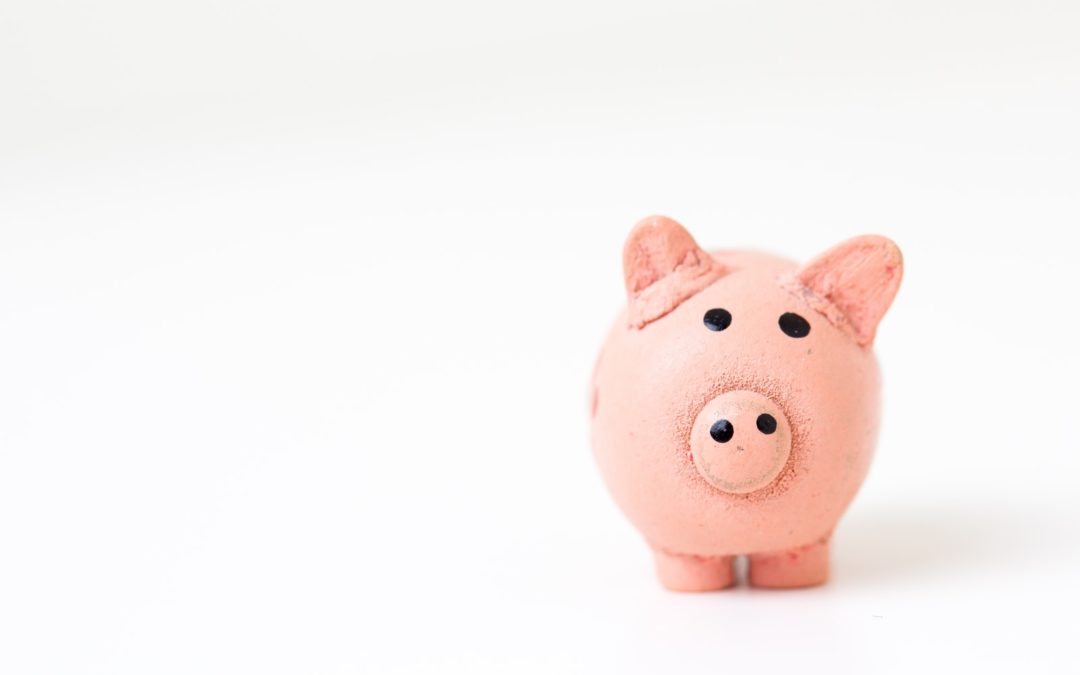
by admin | Nov 3, 2021 | Simple Self Help
Albert Einstein allegedly described the way that you can make money from the interest on your savings as the "eighth wonder of the world". He was talking about the miracle of Compound Interest.
He was justified in his excitement about the way the bank will give you extra money for allowing them to keep your money on deposit. They will lend your money to other people who have become borrowers, and in exchange will reward you with a percentage increase on your own initial money. The money they give you is the result of compound interest.
The sooner you can put some money aside, the better. If you can then add a regular amount - no matter how small - to your savings, you will see your money grow time and time again over the years. This is the principle of money working for you whether you are working, sleeping or playing.
You can start by trying to save an amount from your earnings each month, an amount that is the same each pay check, but even easier than this is to go for a percentage of each amount. The reason that a percentage works so successfully calculate. No matter how much you earn or bring in each pay period, if you tell yourself that you are going to save 10% or 5% your mind will always be able to calculate the amount you need to deduct from the pay check.
Get into this habit of paying yourself first. It will always stand you in good order and create the growth of the savings.
If you allow yourself to think that you should pay your bills and your expenses first and intend to save what is left - guess what - there will be nothing left.
But if you do set aside that 10% from everything you receive then before you look at the bills you have the comfort of knowing you already have 10% set aside as savings for the long term. And almost by magic the 90% that you have left for everything else seems to expand and to grow such that you do not miss the 10% you have already put safely away for your future.
Get started now and you will love it and what it does for you. Enjoy knowing the pleasure of having a consistently growing nest egg for your future, and one which is within your own control and has been structured through your own diligence and wisdom. Each time you get a dividend or interest check, take some of the money and spend it lavishly on yourself, re-investing the remainder so that your balance continues to grow and bring more benefit.
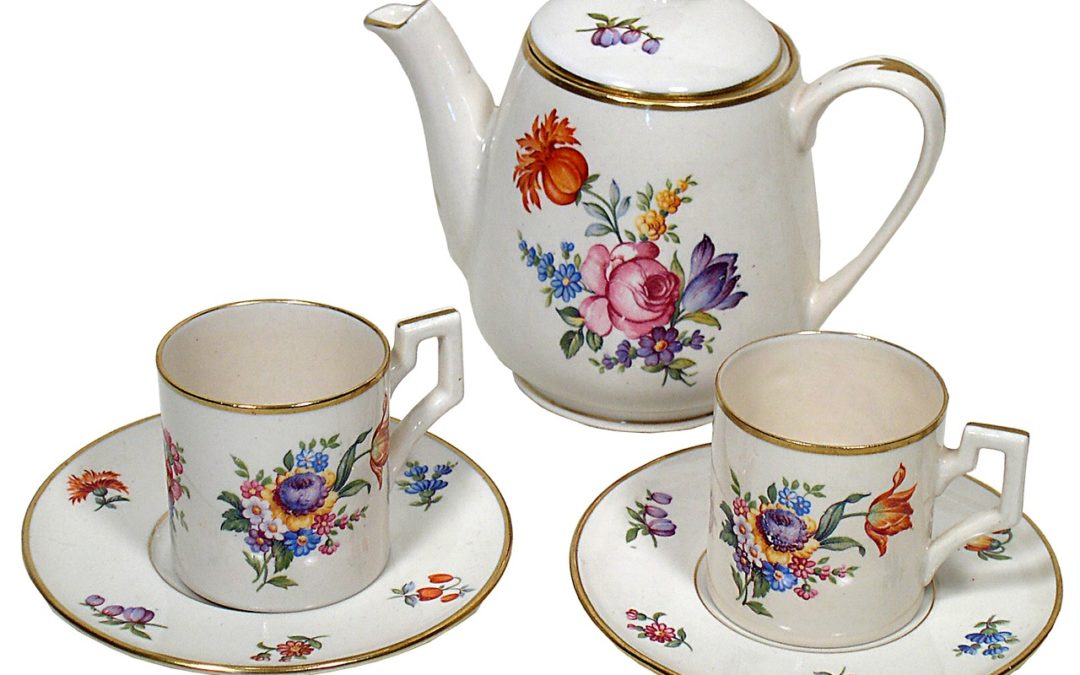
by admin | Oct 21, 2021 | Declutter
So many approaches to hoarding, decluttering, letting go and to dealing with the mess in our homes are rational in their style. But we are not rational creatures, we are human beings. Better put we are 'humans being'. That means we are all emotional, that we attribute meaning to almost everything we do, see and to all of our actions around the topic of decluttering.
So every item in the home has some form of emotional attachment for us. It could be a pencil, a shirt, a saucepan, a pair of shoes or a box of toys. The single biggest obstacle to us making a good job of dealing with the stuff we have accumulated is the sentimental obstacle. We may feel we have to climb over it, step around it, or crawl underneath it, but deal with it we must if we are to make progress in any way at all. Every object in your house can have some emotional pull on you, normally associated with a memory or an image in your head about when you acquired it, who gave it to you, how you were feeling when you bought it. Each of these feelings, memories and reminiscences take up so much space in your head. Sometimes I am amazed I get anything done for all the things in my mind! These are all competing for your attention and there is only so much time you have to deal with each thought or emotional response.
When deciding to deal with the clutter that surrounds you and which overwhelms or drags you down emotionally, you are going to have to be tough with yourself. The decisions you make about what goes and what stays will be hard ones a lot of the time. But once made they should put you in a better place emotionally. In order to get results that last and which make a difference in your home environment, if you pick up every item and handle it, you then have to make a choice over what to do with it. The action of touching each thing strengthens your emotional connection to the decluttering process. You might be telling yourself that you have to keep something for sentimental reasons, but what are they? Could you justify them to a friend?
If the thing you hold cannot be placed on display in your home, then lose it. Let it go. If the item is not worth keeping in a readily accessible part of your house, and I do not mean a box in the basement or a bag in the attic, it has to go. Your task is to keep things which bring value or happiness, which support the life your choose or which should accompany you on the downshift lifestyle you seek. If everything has emotion attached to it, then you are going to keep only those items which are imbued with good, special and treasured feelings.
As with every day in which you are discarding things from your home space, be aware of how you feel as you let go of them. Be mindful of the emotions you associate with a selection of items, or the box you fill with things for the goodwill. Continue to be grateful for your observations and, if it helps to note them down, get them captured and summarised in your journal. You may let go of the items, but you will still have access to the way you felt about the process and it takes up virtually no space to store your thoughts on some special pages. You can keep the simple journal in place of the much larger volumes of stuff you are now able to let go of.
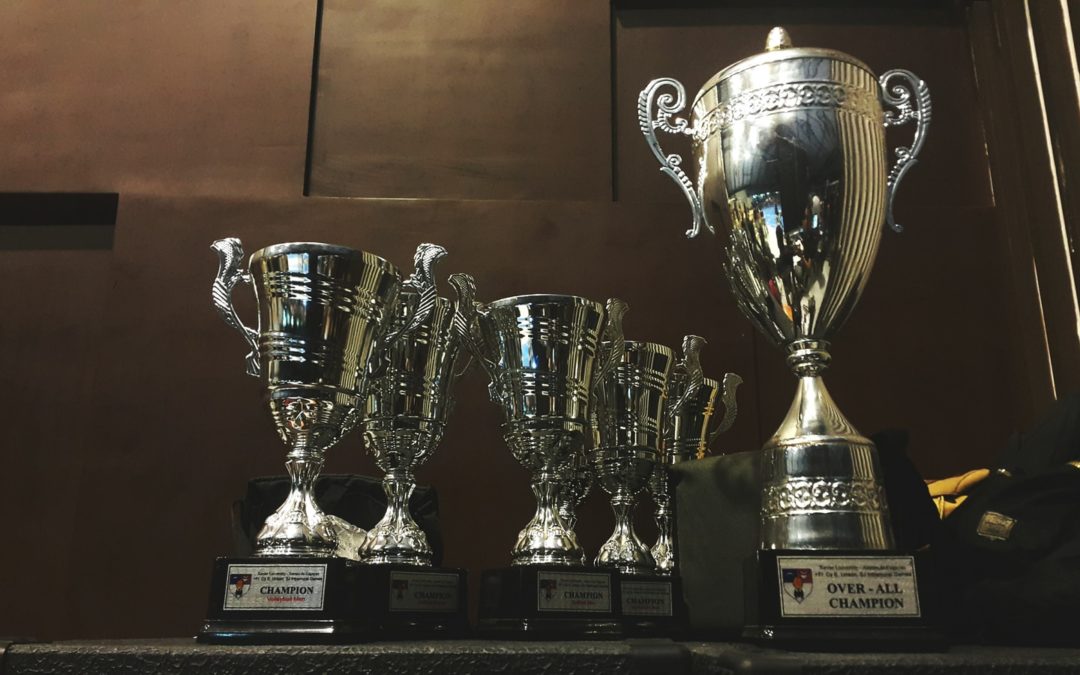
by admin | Oct 7, 2021 | Declutter
For sure, you won a track award when you were seventeen. You gained a silver cup for a move on the sports field when you were at college. In your first job you achieved Employee of the Month four times in a row! But why do you still have them on your shelf or pinned on the wall in your den?
We hold onto such things because they strongly represent our previous achievements, or perhaps our goals and dreams. Some of these we were chasing and then gave up or perhaps simply changed direction. Others we feel are an important part of our life right now and we still consider that we are pursuing that goal in our actions every week. These are items which the emotional attachment makes very difficult to let go of. Sports trophies from when we were at our physical peak, framed team pictures from another life, motivational posters from a business we were a part of, or painting supplies and blank canvases we thought we would have used by now in developing our skills and hobbies to a better level.
We struggle to let go of these because it feels brutal and painful to face the fact that we didn't achieve this goal or that dream. We feel like we messed up or we broke the promise we made to ourselves. I can relate to this. I have USB sticks of unfinished manuscripts. I have the bronze and silver award for a prestigious young person program here in England, but never managed to finish it and earn the gold award. That is something I have regretted for years, and I remind myself how much pleasure it was to achieve the first two awards and the good things I did to accomplish these levels. We had community service projects, volunteer activities, expeditions in the countryside and camping trips where we learned map reading, teamwork and survival skills. These were very positive times in my teenage years and I loved the activity, teamwork, the leadership and guidance we received and think fondly of these times. But that was several decades ago!
Connecting with the emotions of this theme of letting go of previously aspirational clutter can help you to become free of the feelings we associate with not completing goals. Put these thoughts to bed and look now to find new goals and opportunities where you wisdom and enhanced skills will give you an advantage and allow you to start strong with what you have. When you discard the things which represented old aspirations you have not failed at those. You instead need to be gentle with yourself and recognise the goals and points of focus for the life you lead today.
Letting go of unfinished projects, discarding items that you have been unconsciously aware of not completing, and clearing out old resources you will never use to help you with your current goals, this can be immensely satisfying and liberating. Forgive yourself for not accomplishing what you had once been convinced you were going to do.
Consider creating a virtual Memory Box - take digital pictures of many of the items you have struggled with releasing, even though they no longer represent who you are today. Either you want to have them in your home space or your don't. It really is this simple in reality. In practice however, we know that life does not exist in a purely black and white, binary way. Save images of the things you like, but which you would not willingly go out and accumulate again. The pictures are things you can always go back to if you have that sense of nostalgia for the item.
Letting go of these old aspirations, for something that has probably not been a part of your life for some years, will free you up for new and inspiring opportunities and activities. This is where your focus needs to be, on your current goals and aspirations. These are the ones that matter right now.




